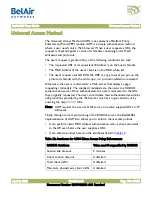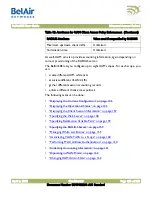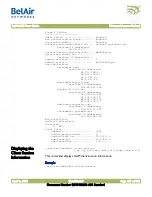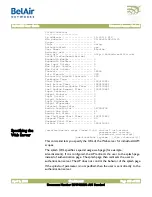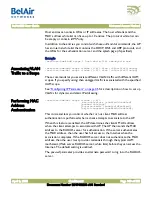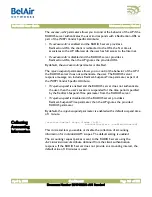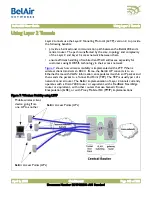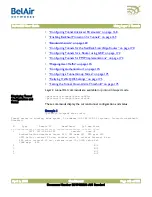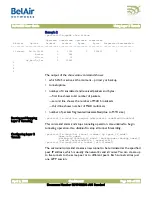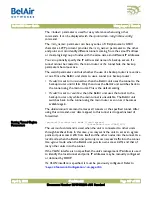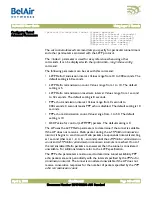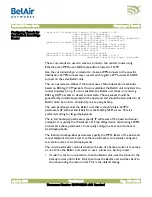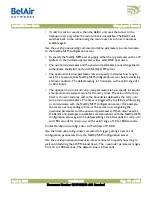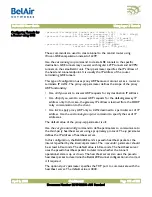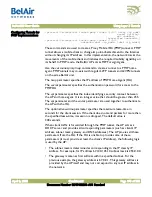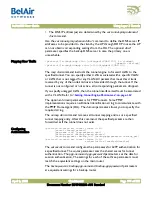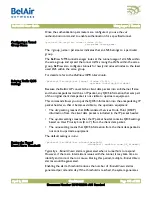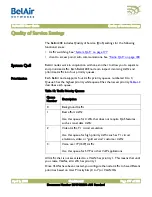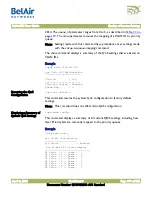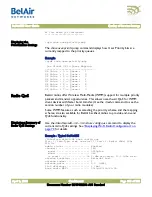
BelAir20E User Guide
Using Layer 2 Tunnels
April 2, 2012
Confidential
Document Number BDTM02201-A01 Standard
Example 2
/protocol/te-syst# show status
Upstream Downstream Upstream Downstream
N Active Uptime Packets Packets Bytes Bytes Fragmented Reassembled
== ======= ============= ========== ========== ========== ========== ========== ===========
1 Primary 0d 01:02:24 0 1023 0 229497 0 0
Brdcst 0 388
Mltcst 0 12
Up_Exc/Dn_Inv 0 10980
2
3
4
5
The output of the
show status
command shows:
• which LNS is active at the moment – primary or backup
• tunnel uptime
• number of transmitted and received packets and bytes:
—first line shows total number of packets,
—second line shows the number of MAC broadcasts
—third line shows number of MAC multicasts
• number of packets fragmented/reassembled (due to MTU size)
Starting and Stopping
Layer 2 Tunneling
/protocol/te-<eng>/set engine admin-state {enabled|disabled}
This command starts and stops tunneling operation. Use
enabled
to begin
tunneling operation. Use
disabled
to stop all tunnel forwarding.
Configuring Layer 2
Tunnels
/protocol/te-<eng>/set tunnel <index> ip <peer_IP_addr>
name <stn_name>
[backup-ip <backup_IP_addr> [backup-name <backup_name>]]
[switch {non-revertive | revertive}]
/protocol/te-<eng>/delete tunnel {all|<index>}
The
set tunnel
command creates a new tunnel to be terminated at the specified
peer IP address, which is usually the network central router. You can create up
to five tunnels to the same peer or to different peers. Each tunnel carries just
one L2TP session.



